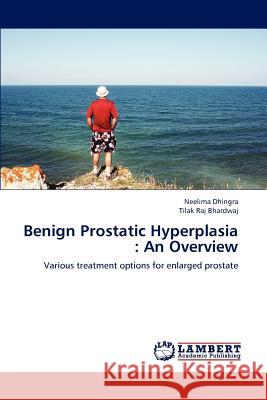Benign Prostatic Hyperplasia: An Overview » książka
Benign Prostatic Hyperplasia: An Overview
ISBN-13: 9783659191039 / Angielski / Miękka / 2012 / 64 str.
Benign prostatic hyperplasia and its clinical manifestation as lower urinary tract symptoms is a major health concern for aging men. A better understanding of the prostate physiology, function, and pathogenesis has led to the development of number of promising agents.The specific approach used to treat BPH depends upon number of factors like age, prostrate size, weight, prostate-specific antigen level, and severity of the symptoms. 5 -reductase inhibitors decrease the production of dihydrotestosterone within the prostate, which results in decreased prostate volume, improvement of symptoms, and need for surgical intervention. 1-adrenergic receptor antagonists decrease LUTS and increase urinary flow rates in men with symptomatic BPH, but do not reduce the long-term risk of urinary retention.Clinical efficacy of either 5 -RI or 1-AR antagonist has been further improved by using combination therapy;however, long-term outcomes are still awaited. Many more potential new therapies are under development that may improve the treatment of BPH.This book gives a brief account of physiology, diagnosis, rationale and efficacy of different treatment options presently available in the management of BPH
Benign prostatic hyperplasia and its clinical manifestation as lower urinary tract symptoms is a major health concern for aging men. A better understanding of the prostate physiology, function, and pathogenesis has led to the development of number of promising agents.The specific approach used to treat BPH depends upon number of factors like age,prostrate size, weight,prostate-specific antigen level,and severity of the symptoms. 5α-reductase inhibitors decrease the production of dihydrotestosterone within the prostate,which results in decreased prostate volume, improvement of symptoms,and need for surgical intervention. α1-adrenergic receptor antagonists decrease LUTS and increase urinary flow rates in men with symptomatic BPH,but do not reduce the long-term risk of urinary retention.Clinical efficacy of either 5α-RI or α1-AR antagonist has been further improved by using combination therapy;however,long-term outcomes are still awaited. Many more potential new therapies are under development that may improve the treatment of BPH.This book gives a brief account of physiology,diagnosis, rationale and efficacy of different treatment options presently available in the management of BPH.











